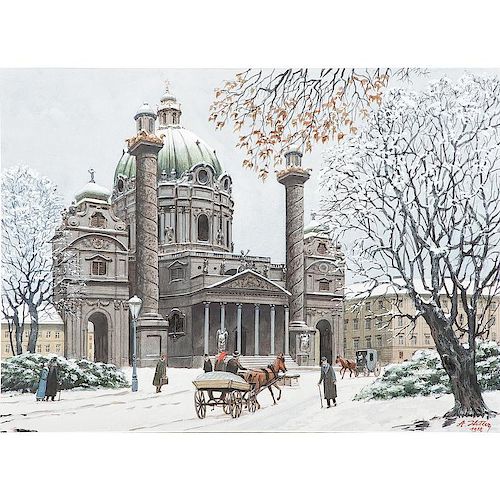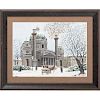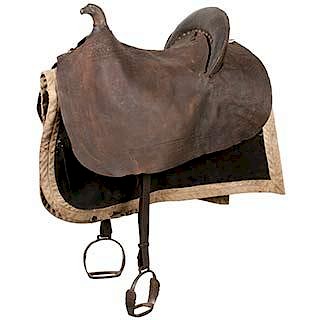Karlkirche in Vienna Watercolor Painting by Adolf Hitler
About Seller
6270 Este Ave.
Cincinnati , OH 45232
United States
With offices in Cincinnati, Cleveland and Denver, Cowan’s holds over 40 auctions each year, with annual sales exceeding $16M. We reach buyers around the globe, and take pride in our reputation for integrity, customer service and great results. A full-service house, Cowan’s Auctions specializes in Am...Read more
Two ways to bid:
- Leave a max absentee bid and the platform will bid on your behalf up to your maximum bid during the live auction.
- Bid live during the auction and your bids will be submitted real-time to the auctioneer.
Bid Increments
| Price | Bid Increment |
|---|---|
| $0 | $25 |
| $500 | $50 |
| $1,000 | $100 |
| $2,000 | $250 |
| $5,000 | $500 |
| $10,000 | $1,000 |
| $20,000 | $2,500 |
| $50,000 | $5,000 |
| $100,000 | $10,000 |
About Auction
Nov 1, 2017 - Nov 3, 2017
Cowan's Auctions dawnie@cowans.com
- Lot Description
Adolf Hitler (German, 1889-1945). Watercolor and gouache on paper, signed and dated 1912, l.r.; 15.75 x 11.5 in.
A substantial and crisp example of Hitler's work, as outlined by expert Peter Jahn in a letter of authenticity dated April 19, 1982.The subject of this painting was one of Hitler's favorites, which he painted several time. The Karlskirche, (St. Charles’s Church) also was one of the favorites of art researcher and authority Peter Jahn. Peter Jahn of Vienna and Dr. August Priesack were considered the leading experts able to authenticate the paintings of Adolf Hitler. In 1935, the historical section of the NSDAP official archives in Munich was assigned the systematic task of locating and certifying the paintings of Adolf Hitler. Two archivists, Wilhelm Dammann and Dr. August Priesack, worked together and were responsible for authenticating all Hitler artwork that could be traced, purchased, or borrowed. The actual search for the art was carried out by staff members under the auspices of Hitler's deputy, Rudolph Hess.
Peter Jahn and Dr. August Priesack were the last surviving experts in the NSDAP search for Hitler's art. Jahn had many conversations with Hitler considering art in general, but particularly the Führer’s own art. With this painting of the castle there is an official letter of authenticity from Peter Jahn regarding this watercolor in detail. Jahn recalls a conversation with the Reich’s Chancellor himself regarding this particular work, as actually being the largest surviving watercolor by Hitler. After the war, Jahn resumed his consulting career with no thoughts of his former activities on behalf of the Hess staff. When his name was mentioned in a magazine article in 1960, however, he received inquiries from all over the world and agreed to serve as personal advisor to the English Marquis of Bath when the latter began his large, personal collection.
Through his knowledge of Hitler’s Viennese style and subject matter and his numerous contacts in Vienna, Jahn has long been an authority on the subject and has traced and authenticated numerous paintings. His files and references were particularly useful to author Billy Price in writing his book on the subject Adolf Hitler: The Unknown Artist. Today, this book is one of the few works that covers the subject so thoroughly and interestingly. Both the paintings are shown in the book, but the Schloss Neuschwanstein canvas is unfortunately depicted in the noncolor section of the book; the St. Charles’s Church in winter, though, is shown in a large picture on page 49 of the price book. Hitler will forever be one of the most famous leaders in the history of mankind and the mystique and fascination surrounding him seem completely unending and if anything, he seems to be becoming more and more popular with his book Mein Kampf clocking a banner digital year in 2013 and 2014 when it became an e-book bestseller on Amazon.
This watercolor and gouache is boldly signed and dated “1912.” It is in fine condition throughout. The great architectural technique is superb and the people in the depiction are somewhat substantial. Hitler, jokingly perhaps, often said that his paintings could easily be recognized by their “unreal people;” however, the incredible attention to detail in his landscapes, city scenes, and architectural renderings absolutely abound in realism while unfortunately less apparent in his handling of the human figure. It is obvious in his works that he reached for majesty in some of his art, but he also pictured simple Germanic country scenes, as well. For him, the great structures such as the Pergamon Altar and the Parthenon, both of ancient Greece, and the ancient Roman Pantheon, symbolized for him the dimension and glory of the race he considered the founders and builders of Western civilization—the Aryans. The monumental cathedral constructions of the medieval period, the palaces of the Renaissance and the neoclassical structures of the 19th century were as he often said, “expressions of a cultural community, a heritage to be preserved and perpetuated.”
The Karl’s Church in Vienna was one of his favorite-subject paintings not only because of its beautiful architectural value, but probably because his youth was spent in the study and admiration of famed saints of the church - as any good altar boy would be proud to do. His appreciation of Saint Charles Borromeo, the Patron of the Baroque, was one of the greatest reformers of the 16th century. In 1713, one year after the last great plague epidemic, Charles VI, Holy Roman Emperor, pledged to build a church for his namesake patron Saint Charles Borromeo, whom was revered as a healer for plague sufferers.
Mr. Billy Price’s book Adolf Hitler: The Unknown Artist depicts numerous churches that were painted by Adolf Hitler. It seems it was his most preferred subject matter and obviously, this says something at least about his very nature and his spirituality. He actually portrayed Karl’s Church in many different views - front, back, sides - over a period of time and he found during his Vienna period of painting that the depictions of this building sold by far the best to the public whom he at that time desperately sought to sell to. But as to the several churches that he artfully depicted, we know this one by far is the absolute finest! Its brilliance and clarity stand out like a beacon shedding the true artistic light that now goes far to illuminate the intense interest that the future Führer had in all things religious when he was young.
The watercolor was professionally framed under glass and matted. The condition of the watercolor is excellent, although the piece was not examined out of the frame. The frame has a few dents, one especially visible on the left edge.Condition
Eliminate the Hassle of Third-Party Shippers: Let Cowan's Ship Directly To You!
If you'd like a shipping estimate before the auction, contact Cowan's in-house shipping department at shipping@cowans.com or 513.871.1670 x219. - Shipping Info
-
Eliminate the Hassle of Third-Party Shippers: Let Cowan's Ship Directly To You!
If you'd like a shipping estimate before the auction, contact Cowan's in-house shipping department at shipping@cowans.com or 513.871.1670 x219.
At the request of the buyer, Cowan's will authorize the shipment of purchased items. Shipments usually occur within two weeks after payment has been received. Shipment is generally made via UPS Ground service. Unless buyer gives special instructions, the shipping method shall be at the sole discretion of Cowan's Auctions, Inc.. Cowan's is in no way responsible for the acts or omissions of independent handlers, packers or shippers of purchased items or for any loss, damage or delay from the packing or shipping of any property.
-
- Buyer's Premium



 EUR
EUR CAD
CAD AUD
AUD GBP
GBP MXN
MXN HKD
HKD CNY
CNY MYR
MYR SEK
SEK SGD
SGD CHF
CHF THB
THB












